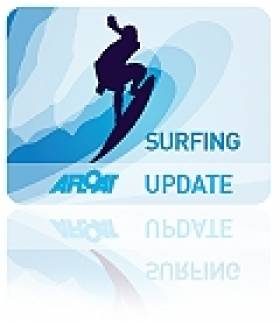Displaying items by tag: Devon
Stowaways On Irish Ferry Found in Fridge Off Devon
#ferry - An airlift to hospital took place of two stowaways with hypothermia after being found hidden in a fridge of a passenger ferry.
As the BBC News reports, Kingsbridge Police said the Afghan men were on board a Cherbourg, France to Dublin, Ireland service when they were found 20 miles off the Devon coast.
They were taken to hospital in Plymouth by coastguard helicopter at 19:30 BST on Sunday. Both have since been discharged and are being held by Border Force.
A spokesperson for Irish ferries said: "The stowaways managed to evade numerous checks at the French port and had hidden themselves in a refrigerated trailer on the freight deck.
"One of our crew was alerted by one of the men trying to attract attention by banging the inside of the trailer. He thankfully managed to get the trailer open."
The ferry, called Epsilon, continued its journey and arrived in Dublin on Monday.
Teen Girl Dies In Devon Speedboat Capsize
#Devon - The Guardian reports on the death of a teenage girl who became trapped under a capsized speedboat in a Devon marina at the weekend.
Three others – the girl's father and two friends – required medical attention after the incident on Saturday 2 May in which the 5m speedboat they were travelling in overturned at Brixham Harbour in Torbay.
Police have appealed for witnessed to come forward as they investigate the circumstances surrounding the incident, which recalls the tragic RIB accident in Cornwall two years ago that killed Sky TV executive Nick Milligan and his daughter Emily.
Irish Surfer Needs Funds to Attend Big Wave Awards
#SURFING - A young surfer from Lahinch in Co Clare is in the running for the 'biggest wave' prize in the 2012 Billabong XXL contest for his monster ride at Mullaghmore Head, The Irish Times reports.
Ollie O'Flaherty, 24, is nominated along with Devon's Andrew Cotton for the massive surf they caught off Co Sligo on 8 March last.
It was the first visit to the world-class big wave spot by O'Flaherty, a science student at NUI Galway who is a veteran of the Co Clare scene.
As previously reported on Afloat.ie, it was Cotton who tackled the biggest wave on that day - a giant 50-footer - as some of the world's top surfers took advantage of the Viking swell.
Also nominated for the $50,000 (€38,280) prize is Irish-American surfer Garrett McNamara, who last year rode what is being called the biggest wave ever surfed in the world, a 90-foot goliath off Nazaré in Portugal.
According to the Irish Independent, O'Flaherty has put out a call for sponsorship so he can attend the awards ceremony next month.
"It's a massive honor to be able to represent Ireland," he said, but added that he is "pretty much on the breadline from what I'm doing".
Should he win, the Lahinch native said he intends to "put every cent back into surfing" and replace his seven broken boards.
The winners will be announced at the Billabong XXL Big Wave Awards in Anaheim, California on 4 May.
































































